Amps, watts, and volts are three basic units of electricity, and Ohm's law states how these units relate to each other. According to Ohm's law, wattage is equal to the product of ampere and volts.
Watts = Amps × Volts
Let's give an example to understand better: Suppose you have an electric device that draws 10 amps at 120V, the wattage of the appliance will be:
Watts = 10A × 120V = 1200W
The higher wattage means the electrical appliance consumes more electricity.
Understanding amps vs. volts vs. watts is important when it comes to installing an electrical system at home or business. Read this detailed guide where we will reveal the definitions of amps, volts, and watts. We will also go over common misconceptions that most people have about these electrical units.
What Are Amps, Watts, and Volts?
When understanding the nitty-gritty of electricity, it's crucial to learn basic electronic terms like watts, amps, volts, and ohms.
Identifying the watt, ampere, voltage, and ohms for any power station is vital to confirming compatibility with your home or outdoor appliances. On the contrary, powering equipment using a wrong voltage battery is the primary reason for appliance operation failure.
The best part about these basic electrical terms is that they are interrelated and can be calculated using a simple formula. For example, you can calculate the watts an appliance consumes by multiplying amps and volts. Let us discuss what are amps and volts and how amps, watts, voltage, and ohms differ.
What Is An Amp?
Amp, short for amperage, is one way to measure the amount of electricity that runs through any circuit. It is the rate at which the current flows through the circuit or the number of electrons that move through the wire. The unit is named after André-Marie Ampère, who was the French physicist and father of electromagnetism.
The receptacle outlet circuits and general-purpose lighting are rated at 15 amps. However, in the newer construction, you'll find some 20 amp circuits for the laundry room, bathroom, kitchen, and even appliances like refrigerator or dishwasher. Large devices like electric clothes dryers are typically rated at 30 amps.
If you want to understand how to calculate amperage, you can apply the Ohm's law formula that says:
Formula: Amps = Watts / Volts
If you have the watts and volts of an appliance, you can easily calculate its amps. For example, if the watts and volts of an electric device are 3600W and 240V, respectively, the amps value will be:
Amps = 3600W / 240V = 15A.
Amperage is the strength of the electric current and is expressed in amperes. The larger the amperage, the more electricity can flow through the circuit. With the help of simple Ohm's law, you can calculate amps from watts and volts.
What Is A Watt?
Watts measure power and are widely used as units of electricity. In other words, wattage is the amount of power any electric device consumes. Another way to understand wattage is that it is the electricity at work or the power it takes to actually do something.
If you have an electrical appliance that consumes one watt, it will typically use one amp flowing at 120 volts. Home appliances like microwaves or televisions generally require more power or watts than small appliances like lights. The same Ohm's law can be used to calculate watts from volts and amps.
Formula: Watts = Amps × Volts
For instance, if an electric device uses 10 amps and 240 volts, the wattage will be:
Watts = 10 amps × 240 volts = 2400W.
The higher the wattage, the more the output and power of the appliance.
What Is A Volt?
In simple terms, the volts (short for voltage) is the pressure pushing the electric current through the wire. Sometimes, it is also described as the speed at which the individual electrons move through the circuit. In the United States, the power coming from the electricity grid is generally delivered at two different voltages: 120 volts and 240 volts.
Generally, small home appliances like TVs, light bulbs, cell phone chargers, and computers need only 120 volts. On the other hand, large and power-hungry appliances like electric ranges, clothes dryers, space heating systems, and air conditioning units operate at 240 volts.
Formula: Volts = Watts / Amps
If the appliance consumes 500 watts and 25 amps, the volts can be calculated as:
Volts = 500W / 25A = 20V
What Is An Ohm?
The home electrical wiring is typically made of copper and aluminum, and both of them have a certain amount of natural resistance or friction. This slows down the electricity flow. Whenever the electricity passes through the appliances and devices, they also apply some kind of resistance.
The resistance or friction is measured in ohms, named after Georg Simon Ohm. If the resistance is higher, more amperage or voltage will be needed to overcome the friction within the electrical circuit.
Formula: Ohm = Volts / Amps
Or, Ω = V / A
For example, if there are 240V and 12A, the natural resistance of the conductor will be:
Ω = 240V / 12A = 20 Ω
What Is Hertz?
Hertz is the rate of change in the directional electricity flow or how quickly it changes. The frequency of change in direction with electricity is measured per second and is represented in Hertz (or Hz). For example, 50 Hz means the rate of change in the directional electricity flow is 50 times per second.
Formula: Hertz (f) = 1 / time (t)
If you live in the US, 60Hz is the standard Hertz value. In Europe, the standard Hertz is 50Hz or 50 cycles per second.
If you have decided to invest in a solar power system, you'll need to remember to never deplete it. Understanding common terms like watts, volts, amps, and resistance about the solar system and the appliances will help you decide which electrical device can be plugged into it.
What Are The Relations of Amps, Watts, and Volts?
Electrical mathematics may seem overwhelming at first. But it's pretty simple once you dig deep. One of the simplest ways to understand the relation between amps, watts, and voltage is Ohm's Wheel Law.

Let's take an example to help you understand how to use the wheel. Say you want to install an AC at your home and finalize a 4000-watt AC for your space. Now you want to determine the circuit required for AC to work efficiently.
In this case, we suppose the AC is rated at 4000 watts and must be supplied with 240 volts. As we already have watts and volts, we need to calculate amps or intensity of current (represented by I).
Now, choose the formula from Ohm's Wheel Law image.
I = W / E
Or, Amps = Watts ÷ Volts
Substitute the values:
Amps = 4000W ÷ 240V = 16.6 A.
As the AC will operate for 3 or 4 hours on a hot summer day, we apply a safety factor of 125%.
Amps = 16.6 × 1.25 = 20.8 amps.
That's it. A standard 25-amp circuit would supply stable and continuous electricity to the AC.
What Are The Power, Voltage, Current, and Resistance?
There are four basic units of electricity: power, current, voltage, and resistance. Each of them is measured in different ways: voltage in volts, power in watts, current in amperes, and resistance in ohms. Here, we will reveal voltage vs amps vs watts vs ohms briefly to understand the role they play in the electrical system:
Power: It is measured in watts and typically represents the useful work done by electricity. Watts generally means the useful work that is done by electricity. One important thing to note is that watts only reflect the work done at any particular moment and not the energy consumed over time.
Voltage: The pressure of electricity is measured in volts. The data centers typically draw power from the electricity grid at a higher voltage, usually 480 volts, that is transformed to a lower voltage for use by the IT equipment.
Current: It is measured in amps or amperes and represents the flow rate of electricity or how many electrons flow through any conductor. The unit describes volume but not pressure.
Resistance: It represents how easily electrons can move through a material. If the resistance is higher, more voltage or ampere will be required to overcome resistance with a current.
Power, Voltage, Current, and Resistance Formulas
In this section, we will reveal the main formulas of power, resistance, current, and voltage.
Power: How to Find Watts With Volts and Amps
If you want to calculate the power of any electrical circuit or appliance, you need at least volts and amps. Watts is equal to the product of both voltage and current. For example, if the appliance or electric circuit is rated at 12V of voltage and 10 amps, the wattage can be calculated as follows:
Watts = Volts × Amps = 12V × 10A = 120W
Voltage
Similarly to power, you can also calculate the volts of the circuit or appliance using a simple formula. Volts are equal to the watts divided by the amps. For example, if the watts of an appliance is 50W and the flow of the current is 5A, the voltage will be:
Volts = Watts ÷ Amps = 50W ÷ 5A = 10V
Current: How to Find Amps With Watts and Volts
Current is the measure of flow through the electrical circuit. It's measured in amps and equals to 0.001 kilowatts per hour. For example, if the refrigerator has a rated power of 60 watts with a voltage of 12 volts, the current can be calculated using the following formula.
Amps = Watts / Volts = 60W / 12V = 5A
Resistance: How to Find Volts With Watts and Amps
Resistance determines how easily electrons can move through a material. Suppose your refrigerator has stopped working on 12V, and you want to check if the 12V heating element is suitable by measuring the resistance. In this example, the voltage is 12V, and the wattage of the refrigerator is 120W; you can calculate the resistance with the below formula.
Resistance = / Watts = (12 × 12) / 120 = 1.2 ohm

Each triangle in the above diagram represents the three most used formulas that you'll need.
Amps, Watts, and Volts Formulas
Now that you know the basics of wattage, amps, volts, and ohms, here's how to calculate watts from amps and volts with a few easy formulas.
Amps Formulas:
The current (in amps) equals the voltage (in volts) divided by the resistance (in ohms).
I = V ÷ R
The current (in amps) equals the power (in watts) divided by the voltage (in volts).
I = W ÷ V
The current (in amps) equals the square root of power (in watts) divided by the resistance (in ohms).
I² = W ÷ R
Or, I =![]()
Watts Formulas:
The power (in watts) equals the voltage (in volts) times the current (in amps).
W = V × I
The power (in watts) equals the square of voltage (in volts) divided by resistance (in ohms)
W = V² ÷ R
The power (in watts) equals the square of current (in amps) times the resistance (in ohms).
W = I² × R
Volts Formulas:
The voltage (in volts) equals the current (in amps) times the resistance (in ohms).
V = I × R
The voltage (in volts) equals the power (in watts) divided by the current (in amps).
V = W ÷ I
The voltage (in volts) equals the square root of power (in watts) times the resistance (in ohms).
V =
What Are The Differences of Amps, Watts, and Volts?
Amps, watts, and volts measure electricity and represent how efficient and powerful an electrical system is. Volts measure the force, and watts represent the amount of energy used. Amps determine the flow of electrical currents. Here, we will reveal the main differences between amps, watts, and volts.
Volts
Volts are the simple base unit of voltage and determine the potential difference between any two points. It also refers to the electrical pressure that is applied inside the circuit. When the volts are increased, the current will increase as well.
The current will quickly flow through the electrical system in a loop only if the circuit is not broken. One voltage is the electric potential difference between two points within a wire or circuit. The following table reveals different appliances and their voltage levels.
|
Object or Device |
Voltage (V) |
|
Rechargeable Battery |
1.2 |
|
Non-Rechargeable Battery |
1.5 |
|
USB |
5 |
|
Automobile Battery |
2 |
|
Electric Vehicle Battery |
400 |
|
Household Battery |
230 |
|
Rapid Transit Third Rail |
600-750 |
|
Electric Power Lines (High Voltage) |
110,000 |
|
Lightning |
100,000,000 |
Watts
Watts are commonly described as the base unit of electrical power within any electrical system. It determines the amount of energy that's released within a system per second. If the watts are higher, more electrical power and energy are being produced.
Understanding the wattage will help you choose electrical devices that use less energy. In addition, it also assists you in determining how many watts of solar system can power your home. Here is the table that reveals appliances and their average watts usage.
|
Device or System |
Cost per hour |
Energy Consumer |
|
Heat Pump or Central Aircon |
$2 |
15,000W |
|
Hot Water System or Clothes Drier |
0.55 Cents |
4,000W |
|
Water Pump |
0.40 Cents |
3,000W |
|
Heater |
0.20 Cents |
1,500W |
|
Hair Dryer |
0.16 Cents |
1,200W |
|
Electric Stove |
0.14 Cents |
1,000W |
|
Fridge |
0.14 Cents |
1,000W |
|
Computer with Monitor |
0.05 Cents |
400W |
|
Light Bulb |
0.008 Cents |
60W |
Amps
If you are wondering about what is current measured in, then amps is the answer. Amps are the base unit for electrical currents and measure the volume of how many electrons are present. It also determines how much electrical energy or electricity is provided within one line.
Common Misconceptions About Amps, Watts, and Volts
There are many common misconceptions about amps, watts, and volts. Here, we will discuss them briefly.
Higher Voltage Means Higher Power
While it is true that higher voltage means more power, you must remember that power is the product of both current and voltage. For example, a higher voltage with a lower current can produce the same power output as a lower voltage with a higher current. The voltage is higher only if both the voltage and current are high.
Voltage and Current Ratings are Interchangeable
Many people often think that each electrical device operates at a specific current and voltage range. When you use an appliance outside of the intended current or voltage range, it can lead to damage, reduced performance, and even situations like electrical shocks or fires.
More Amps are Better
The amount of current (measured in amps) needed depends on the specific appliances you are charging. Sometimes, a higher current might be necessary to power any device or complete a task, and understanding amps vs watts is necessary. However, it might be dangerous in other cases. A higher current can lead to overheating or even damage the electrical components.
Jackery Examples to Better Understand Amps, Watts, and Volts
It is important to note that the watts, amps, and volts can not only help you calculate the amount of power but also the size of a solar system. A battery backup that has a higher watt-hour rating can charge more appliances for long hours.
Jackery is a trusted solar brand that manufactures solar generators, power stations, and solar panels. When you place the Jackery SolarSaga Solar Panels under direct sunlight, the monocrystalline solar cells absorb and convert the solar energy into DC electricity. The electricity is then passed to the pure sine wave inverter of the Jackery Explorer Portable Power Station to convert DC to AC current and charge appliances.
Jackery Solar Generator 300 Plus – Best For Camping
The Jackery Solar Generator 300 Plus is one of the portable charging solutions that's ideal for outdoor adventures such as camping. It weighs only 8.27 lbs and features a foldable handle to move the solar generator from one place to another. The multiple output ports of the solar generator ensures you can charge various camping appliances, such as portable fans, lights, laptops, drones, etc.
Appliances Running Time
- Portable Refrigerator (60W) = 4.0H
- Camping Lights (20W) = 12.2H
- Portable Fans (40W) = 6.1H
- Ice Maker (150W) = 1.6H
- Laptops (80W) = 3.0H

Jackery Solar Generator 1000 Plus - Best For Overlanding
The Jackery Solar Generator 1000 Plus is a midsize solar-powered generator that can charge 99% of your outdoor appliances during overlanding adventures. The large battery capacity of the solar generator ensures you can charge a portable AC to stay cool, outdoor electric grills to cook food, and a portable freezer to keep food and medicines cold. Anytime you think you would need more power, the battery capacity can be expanded from 1.2kWh to 5kWh with the additional Jackery Battery Pack 1000 Plus.
Appliances Running Time
- Outdoor Electric Grill (1000W) = 1.0H
- Portable Refrigerator (300W) = 3.5H
- Portable AC (700W) = 1.5H
- Ice Maker (150W) = 7.1H
- Smartphone (30W) = 35.8H

Jackery Solar Generator 3000 Pro - Best For Off-Grid or Home Backup
If you're looking for a large off-grid or home backup solution for most of your home or outdoor appliances, you may consider the powerful Jackery Solar Generator 3000 Pro. The foldable handle, double wheels, and a pull rod ensure easy movement of the solar-powered generator from one place to another. It can even be connected to the home's electrical system to ensure essential appliances like refrigerators remain powered during unexpected power outages.
Appliances Running Time
- Refrigerator (400W) = 6.4H
- AC (1200W) = 2.1H
- Induction Cooktop (1100W) = 2.3H
- Portable Coffee Maker (1000W) = 2.5H
- TV (150W) = 17.1H

Understanding Amps, Watts, and Volts in Electrical System
Besides watt, ampere, voltage, and ohms, there are a few additional electrical terms. Let us explain them briefly.
Atoms: They are known as the building blocks of matter that consist of a nucleus with protons and neutrons. It is surrounded by negatively charged electrons, resembling a mini solar system. Similar to atoms, the electrical system is made of matter.
Electrons: Unlike planets that move slowly, electrons move around the nucleus at the speed of light. The moving path of electrons is called a probability cloud.
Electricity: Atoms grouped together are called molecules. Both atoms and molecules located closely can easily pass electrons from one atom to another. This is the same case when electrons flow through a conductor.
Connecting your electrical equipment with the wrong voltage or power supply can cause appliance failure. That's why calculating the electrical ratings is essential before investing in a solar system or an electrical battery.
The Electrical Efficiency
In an electrical system, power (measured in watts) equals the voltage multiplied by the current. Electrical efficiency means powering the same device using less energy. When you have an efficient electrical system, it means there is less waste of energy.
Suppose you are using a 12-volt battery and a 12V light bulb. You need 240 watts of power to light the bulb. Let us apply Ohm's Law to calculate the amps.
I = W ÷ V = 240W ÷ 12V = 20 amps.
Now let us say you have a 24-volt battery and a 24-volt light bulb to get the same amount of power, i.e., 240 watts.
I = W ÷ V = 240W ÷ 24V = 10 amps.
Resistance, in this case, will be 2.4 ohms.
Upon evaluating currents in the two scenarios, the latter system produces the same power using half the current. This means the second electrical system is more efficient.
When you connect the appliance to the wrong voltage, there are higher chances of equipment failure. If you hook up the new appliance to the faulty power supply, it will not work and may even get damaged. Understanding watts, amps, volts, and ohms will help you choose the right solar system and charge appliances efficiently.
Amps, Watts, and Volts FAQs
How many amps are in 10 watts at 120 volts?
You can calculate the amps by dividing the given watts by volts.
Amps = Watts ÷ Volts = 10W ÷ 120V = 0.083A
Here's how to figure out amps with different power and voltage values.
|
Power (W) |
Voltage (V) |
Current (A) |
|
10 Watts |
120 Volts |
0.0833 amps |
|
20 Watts |
120 Volts |
0.167 amps |
|
30 Watts |
120 Volts |
0.250 amps |
|
40 Watts |
120 Volts |
0.333 amps |
|
50 Watts |
120 Volts |
0.417 amps |
|
60 Watts |
120 Volts |
0.500 amps |
|
70 Watts |
120 Volts |
0.583 amps |
Does higher watts mean more power?
In short, yes. As watts represent the rate at which energy is used or transferred, it is directly related to power. The higher the watts of a battery capacity, the more power.
How much voltage is safe for us?
A voltage of 50V AC or 120V DC is generally safe as long as the shock duration does not exceed three seconds. However, the individual sensitivity to electric shock may vary and might be influenced by several factors, like skin resistance, personal health, and environmental conditions.
How to work safely on my home electrical system?
When working with electricity, you'll need to keep a few essential things in mind. Here are some of them.
- Before you turn off the power, ensure the multimeter or electrical tester works appropriately.
- Wear safety glasses and nonconductive latex, rubber, leather, nitrile, or similar dry gloves.
- When working on the electrical circuits, always turn off the power supplied to them.
- You must wear proper, sturdy footwear and use a dry, nonconductive mat when working outdoors.
Final Thoughts
Knowing the current flowing the load is vital in choosing the best wire. The amps, watts, voltage, and ohms formulas are also helpful in calculating the size of the solar inverter and total power consumption. Once you know how much power your appliances consume, you can easily calculate the portable power station size.
Depending on your power needs, you can choose Jackery Explorer Portable Power Stations, available in different sizes. If you want to power all small and large home or outdoor appliances for hours, consider investing in the ultimate power solution Jackery Explorer 3000 Pro Portable Power Station.

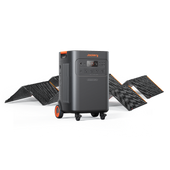











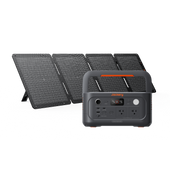





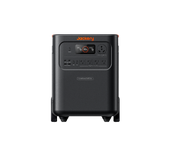
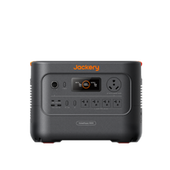





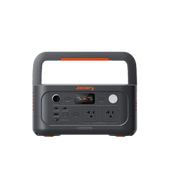





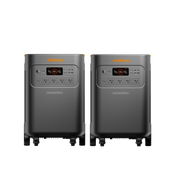
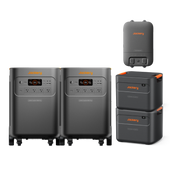





![[Add - on] Jackery Manual Transfer Switch for Explorer 5000 Plus - Jackery](http://www.jackery.com/cdn/shop/files/add-on-jackery-manual-transfer-switch-for-explorer-5000-plus-9017324.png?v=1754016782&width=170)

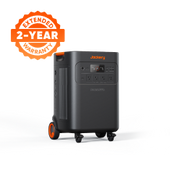
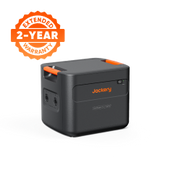
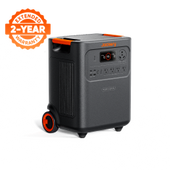






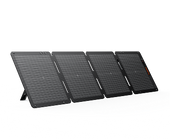

























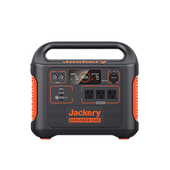







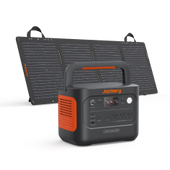
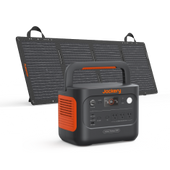





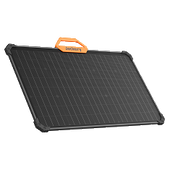
















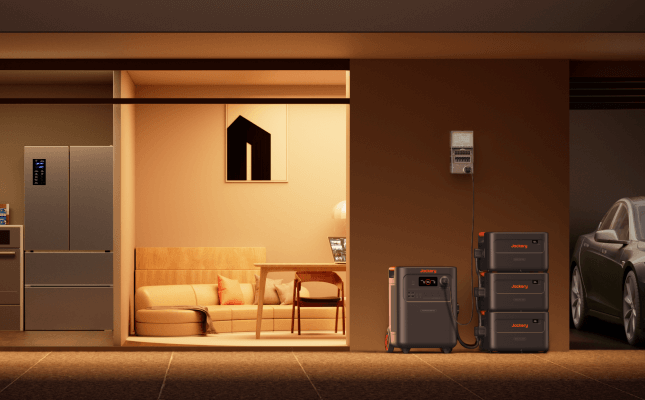


























Leave a comment